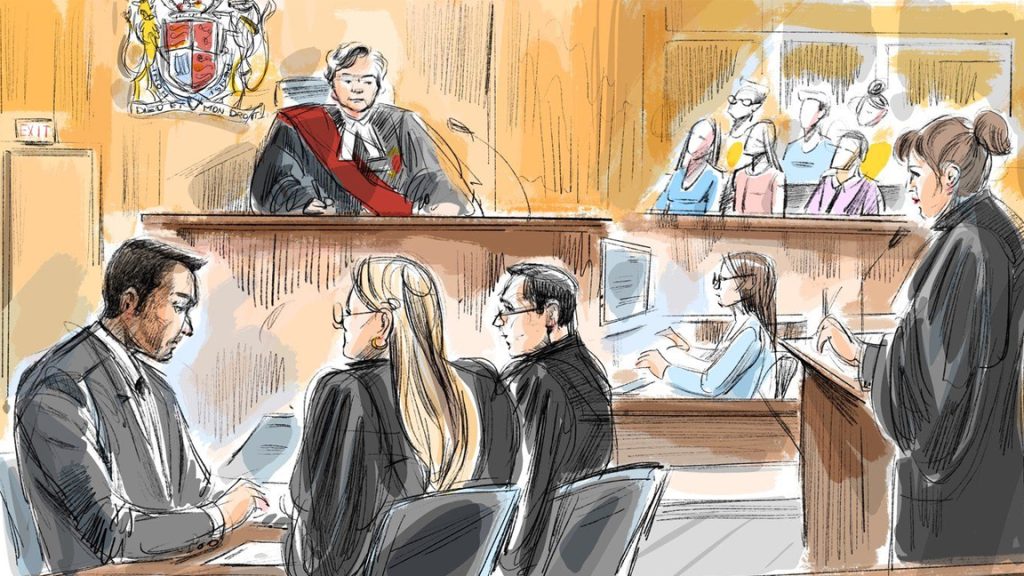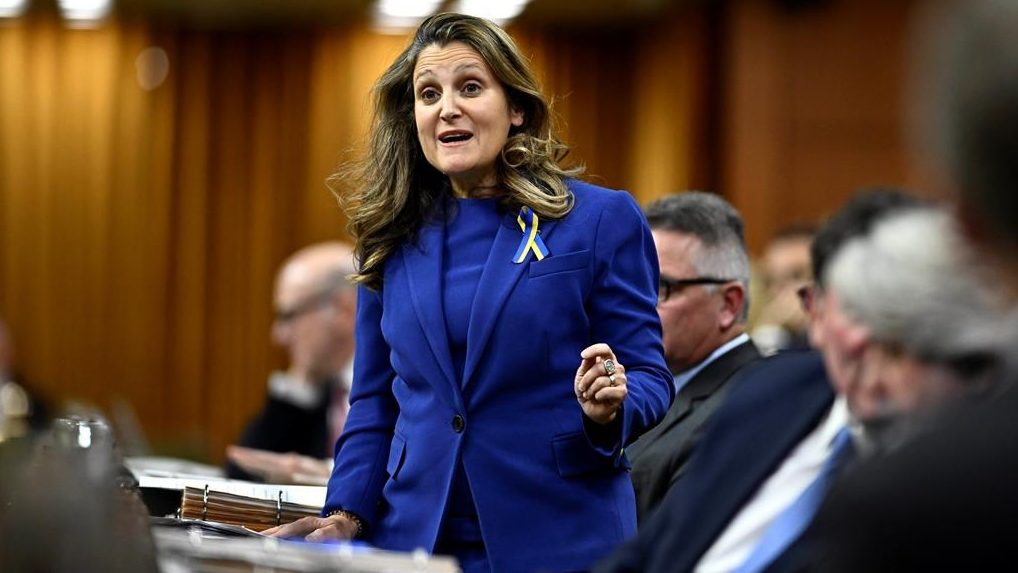Colorado theatre shooter James Holmes went from happy boy to mass killer
Posted July 30, 2015 8:41 am.
Last Updated July 30, 2015 12:40 pm.
This article is more than 5 years old.
CENTENNIAL, Colo. – He flashed a toothy grin in his second grade photograph, but by the ninth grade, the smile was gone, replaced with an awkward smirk and a wild look in his eye.
James Holmes, now 27, was still “Jimmy” then, by most accounts a happy, mild-mannered kid, but he was morphing into an odd loner, so quiet and detached it was easy to forget he was there.
A fuller portrait of the Colorado movie theatre shooter has emerged during his death penalty trial. Yet more than 12 weeks of testimony — most recently about his unremarkable suburban childhood and college years — have made it even more difficult to comprehend his descent from a well-behaved child with a quirky sense of humour into a killer capable of gunning down defenceless strangers.
Robert Holmes assumed his son had been hurt when he got an early morning phone call from a reporter telling him of the shooting at a crowded midnight movie premiere.
“It never occurred to me that he would be the shooter,” the older Holmes said. “He was not a violent person. At least not until the event.”
James Holmes’ defence says mental illness contorted him from a once-promising neuroscience graduate student into the deranged-looking man police arrested outside the blood-drenched theatre where he killed 12 people in July 2012. A forensic psychiatrist who diagnosed him with schizoaffective disorder testified that Holmes suffered delusions that drove him to kill and said the massacre would not have happened if he weren’t severely mentally ill.
The defence team hopes this conclusion — and testimony from his family and more than a dozen friends, neighbours and grade-school teachers — will persuade jurors to show mercy and spare him from execution. They offered details of Holmes’ pleasant and seemingly average life to counter the prosecutors’ depiction of him as a monster who wanted to kill as many as he could in the audience of more than 400 people, and stopped at 12 only because his assault rifle jammed.
Jurors must consider Holmes’ early years as they decide his fate. They could sentence him to life in prison if they find his mental illness reduces his moral culpability and if his enduring human connections show justice is better served by mercy than capital punishment.
Long before Holmes amassed a weapons arsenal, dyed his hair comic-book orange and opened fire in suburban Denver, he was a friendly boy who liked soccer, never got into fights, cradled his baby sister and helped the younger kids celebrate Halloween with a haunted house that was more fun than scary. Everyone knew him as Jimmy.
“He played well. He was always polite, said ‘please’ and ‘thank you,'” said Katherine Barrett, who lived near the Holmes family in a close-knit part of Salinas, near California’s coast.
He looked out for his sister, Chris, five years younger; impressed his second-grade teacher; baked cookies with his grandma; and made a Valentine for his dad, who said he was “really a pretty excellent kid.”
The Holmes family moved to San Diego when he was in the sixth grade. Tears welled in his eyes as their car pulled away from what had been a happy life with many young friends.
It was about that time that he said he tried to cut his wrists with a piece of cardboard, he told a psychiatrist after the shootings.
His mother, Arlene Holmes, noticed an almost imperceptible change even before the move to Southern California but figured it was puberty.
“He was living on a blue note, where you’re not so exuberant or joyful,” she testified.
But if he was having suicidal or homicidal thoughts as he came of age, he did not tell his parents, said Robert Holmes, whose own father and twin sister each spent time in psychiatric hospitals for schizophrenia. Mental illness wasn’t something his family talked about.
His parents could tell he was isolated and struggling to make friends. They tried family counselling, but stopped after a year. Inwardly, their son was becoming a sullen teenager, tormented by homicidal thoughts.
Holmes said after the attack that he was just 10 when he first started thinking of killing people. He would picture those who hurt or annoyed him but also people who had done nothing to him at all, he said.
Holmes withdrew more with each passing year.
A few close Westview High School friends said he would open up to them, but his family never met them.
Holmes’ parents pushed him to join the cross-country team, but the gangly teenager stood so far from his teammates for the team photo that it had to be taken multiple times to get him in the frame, his coach, Lori Godwin testified.
“I never saw Jimmy smile,” she said. “He was just kind of a shadow figure. He was always on the outside. If I didn’t take roll, I probably wouldn’t have even known he was there.”
Yet in academics, he excelled. He decided at 14 that he would study neuroscience, and his high grades earned him a full-ride scholarship at the University of California, Riverside.
Once he left home, he nearly stopped calling his parents, who relied on terse and sporadic emails to check on his well-being.
“He wasn’t really a phone person,” Robert Holmes said. “We didn’t really know what he was doing socially.”
He graduated with high honours but chose not to walk with his classmates at the ceremony. Still, his family saw no reason for alarm.
But James Holmes said he realized early on that his mind was troubled and that he couldn’t trust anyone else to make it right.
“He had a sense there was something wrong with him,” said Dr. Jeffrey Metzner, who examined him after the attack. “He was hopeful that if he learned something about the brain, he could fix it.”
Holmes applied to only the most competitive graduate schools and was disappointed when none accepted him. So he returned home and retreated into video games, until his mother gave him an ultimatum: get a job or get out. He chose the graveyard shift at a pill-coating factory, and his parents saw him even less.
He again applied to graduate schools, without their help.
This time he was accepted into the University of Colorado’s prestigious doctoral program in neuroscience. He packed his white Hyundai and headed to Denver by himself, rejecting his father’s offer to help him move.
From the outside, things seemed to be looking up. Holmes forged his first romantic relationship with a fellow grad student and kept up his grades, initially. But his anxiety was worsening. He struggled with labs requiring social interaction. Classmates described his presentations as painfully awkward.
Even Gargi Datta, the only woman Holmes said he ever loved, didn’t feel a bond.
“I told him that I didn’t see a future with him,” she said.
Before they stopped speaking, she urged him to see a psychiatrist to help with his fear of social settings. He told that doctor, Lynne Fenton, he was having homicidal thoughts three or four times a day. He also told her that he had thoughts of killing people.
But he told no one that he had begun collecting the implements of a massacre, having purchased a handgun, a shotgun and an assault rifle.
He mostly stopped returning his father’s calls. “Not much news here,” he wrote in an email in June 2012. He did not let on that had already failed a key exam.
His murderous delusions were “like a storm that in some ways he tried to stop,” said Raquel Gur, a schizophrenia expert who found him too psychotic at that point to know right from wrong.
Holmes withdrew from school, gave up therapy and rigged his 800-square-foot apartment into a potentially lethal booby trap. He scribbled in his spiral notebook that he was solely focused on his “mission”: to kill as many as he could at “The Dark Knight Rises” premiere.
“Despite my biological shortcomings, I have fought and fought,” he scrawled. “There is one more battle to fight with life. To face death, embrace the longstanding hatred of mankind and overcome all fear in certain death.”
___
This story has been corrected to show the name of the movie is “The Dark Knight Rises,” not “The Dark Night Rises,” and James Holmes had a Hyundai, not a Honda.










